How to Understand Customer Versus Order Prioritization and in SAP CTM
Executive Summary
- We cover how CTM works at a high level, the traditional problems with CTM projects, and a service level based contract example. Customer prioritization means something that may surprise many in practice.
- Also covered is the CTM Profile and pegging in CTM.
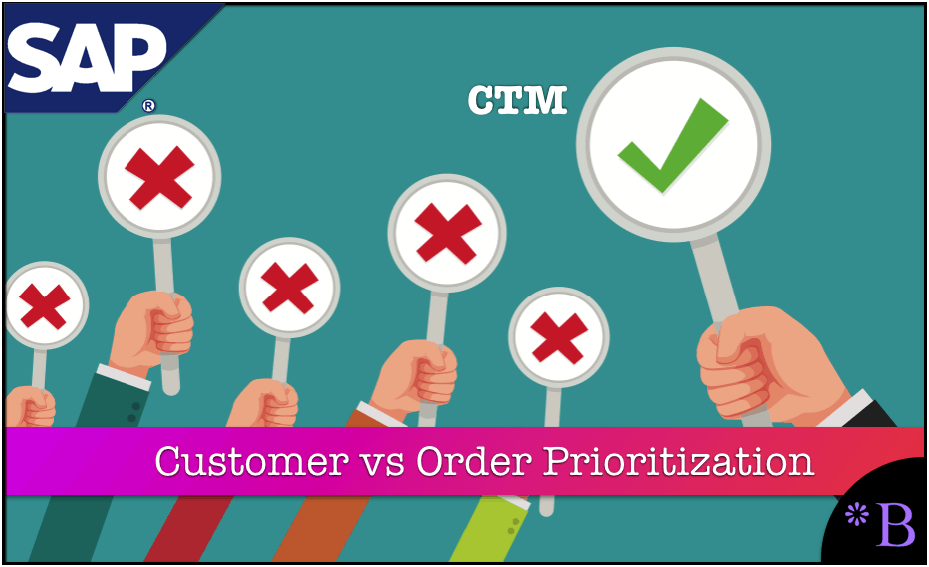 Prioritization in Capable to Match (CTM) works on the principle of running some customers through the planning process and allowing them to have inventory pegged to their requirements before others.
Prioritization in Capable to Match (CTM) works on the principle of running some customers through the planning process and allowing them to have inventory pegged to their requirements before others.
Our References for This Article
If you want to see our references for this article and other related Brightwork articles, see this link.
Notice of Lack of Financial Bias: We have no financial ties to SAP or any other entity mentioned in this article.
- This is published by a research entity, not some lowbrow entity that is part of the SAP ecosystem.
- Second, no one paid for this article to be written, and it is not pretending to inform you while being rigged to sell you software or consulting services. Unlike nearly every other article you will find from Google on this topic, it has had no input from any company's marketing or sales department. As you are reading this article, consider how rare this is. The vast majority of information on the Internet on SAP is provided by SAP, which is filled with false claims and sleazy consulting companies and SAP consultants who will tell any lie for personal benefit. Furthermore, SAP pays off all IT analysts -- who have the same concern for accuracy as SAP. Not one of these entities will disclose their pro-SAP financial bias to their readers.
The Tricky Business of Customer Prioritization
The business has some ways that they want to prioritize customers. Different departments within companies like to prioritize customers in different ways. There are a seemingly unlimited number of ways to prioritize customers, and some examples can include:
- By customer location
- By contract (i.e., different customers are allocated to separate contracts)
- By customer product
<p “>However, what is often not well understood for companies implementing APO, is that CTM’s prioritization capability (and what eventually becomes allocations which are managed and enforced by GATP, if GATP is in the solution architecture) is much more limited than the prioritization imagination of those coming up with the prioritization scheme. This is why the prioritization sequence mustn’t be created in isolation without understanding what CTM can provide. However, what it can do and cannot do should be impressed by the business decision makers, and the earlier this happens on projects, the better. It is also important to understand that CTM was originally designed for a specific industry (semiconductors), which as particular requirements, which do not necessarily generalize to other industries. However, those industries may have an interest in prioritization.
<p “>“The priority and order based sequential planning approach is congruent with the mindset of semiconductor planners because it ensures that high priority customers and demands are processed first and forecast is matched to the available capacity after customer order fulfillment. Due to the sequential planning and the tracked pegging relationships connecting supply and demand elements, it is transparent to the planner which planned production or transportation order was created for which demand element. In certain situations it may be desirable to sell a higher grade product for fulfilling a demand for a lower grade product.” – Real Optimization with SAP APO
The fact that CTM was designed for one industry was particular requirements in mind is left out of SAP documentation, consistent with SAP’s interest in selling their functionality to as wide a customer base as possible. However, there is a lot more to CTM and a lot more overhead to CTM than simply performing prioritization.
How CTM Works…at a High Level
One does not need to be a CTM expert to understand what CTM is doing. In fact, it is simple to understand.CTM works by sort order on both the demand and supply side. CTM allows segmentation of the following:
- On the demand side, which is made up of customers
- On the supply side, which is made up of inventory and planned inventory
Supply and demand are then applied to different master data selections. Thus a CTM run can be performed with the following filter or limitations:
- For all the locations in the supply network or just one location, or any number of locations in-between.
- For all external procurement sources or in-house production, for just external procurement or just in-house production, or any combination of limited product sources.
- For any period restriction, or completely unrestricted. (Thus a CTM run could be performed which only creates allocations for one day or have no limit on the time whatsoever)
Now that we have covered the setup and basics of CTM, we can move on to how CTM is run.
The Running of CTM
A CTM run uses the combination of supply, demand, and master data selection to perform sequential planning. The actual process it uses is simple. It runs some demand segments (i.e., customers) before others. Thus, these earlier runs consume inventory through pegging, and then later runs, and demand segments have less inventory available to them because the previous runs have taken it. At some point, inventory is no longer available for the lowest priority demand segments. CTM lines up your customers or customer categories in order. In this way, it is a glorified queueing software.
Permanent or Temporary Connections Between Supply and Demand Elements?
CTM can be run in a way that fixes the peg, which means that once the association between the demand element and supply element is made, it can not be altered. The other way to run CTM is called dynamic pegging, where after every run, all the demands and supplies are re-pegged. (We have never understood the purpose of dynamic pegging and also never seen it used). There are many other features but are beyond the scope of this article. However, other articles that explain more detail about CTM are available in the reference section below. Traditional Problems with CTM Implementations
An important consideration is that the more times that the supply and demand selections are segmented and more the master data selections are segmented (as opposed to running for all selections and all sources of supply), the more complex the model becomes, and the more difficult it becomes to maintain and to make changes to have seen two implementations because the number of CTM profiles combined with the master data selections grows to be too large and too complicated. Customer Prioritization is Set in CTM in the Special Sorting Profile
Customer Prioritization is configured in CTM in the Special Sorting Profile, which configuration is shown below:
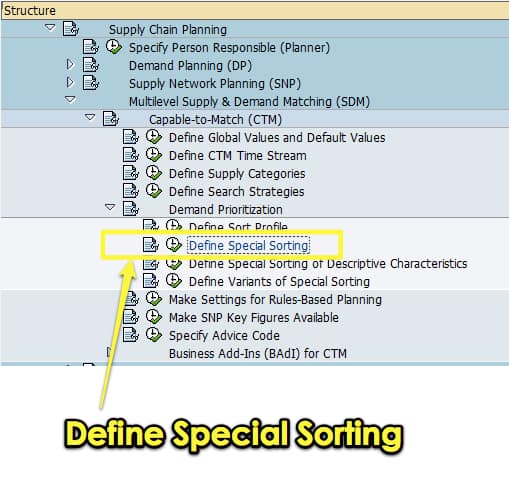 In the example below, I am setting which customers will take precedence over which. However, the prioritization sequence first follows the Demand Tab and the Supplies Tab settings, then within this sequence is a further sequence. The further sequence can be defined specifically (that is, much more specifically than by using ascending or descending in the Demand Tab).
In the example below, I am setting which customers will take precedence over which. However, the prioritization sequence first follows the Demand Tab and the Supplies Tab settings, then within this sequence is a further sequence. The further sequence can be defined specifically (that is, much more specifically than by using ascending or descending in the Demand Tab).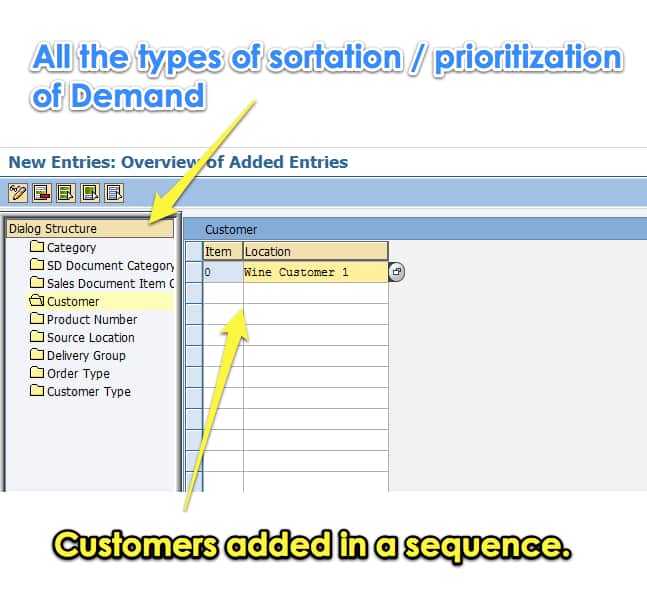 As can be seen from the Special Sorting options that are set above, by the following categories:
As can be seen from the Special Sorting options that are set above, by the following categories:
- Category
- SD Document Category
- Sales Document Order Category
- Customer
- Product Number
- Source Location
- Delivery Group
- Order Type
- Customer Type
CTM and the Service Level Based Contacts Example
Many companies in the finished goods business are attempting to implement service level based planning and contracts. What this means is different for customers who are assigned to different “contracts.” However, if some customers are combined into one category, then CTM will not prevent one of them from taking inventory of others. Let us use an example to make this clear. Take the hypothetical three customers that are shown in the graphic below. They are all gold level contract customers, so they are initially placed in the same CTM profile and run through simultaneously.
- Scenario 1: Because of this, they all have the same priority and capability to take inventory.
- Scenario 2: However, after running CTM for a while, the company begins to notice that because customer 3 places such high order quantities onto this company, even though customer 1, 2, and 3 are all in the same priority, customer 3 takes too much inventory from the other two customers in a way that the company deems not consistent with its strategy in the market. So the decision is made to break customer three into its profile.
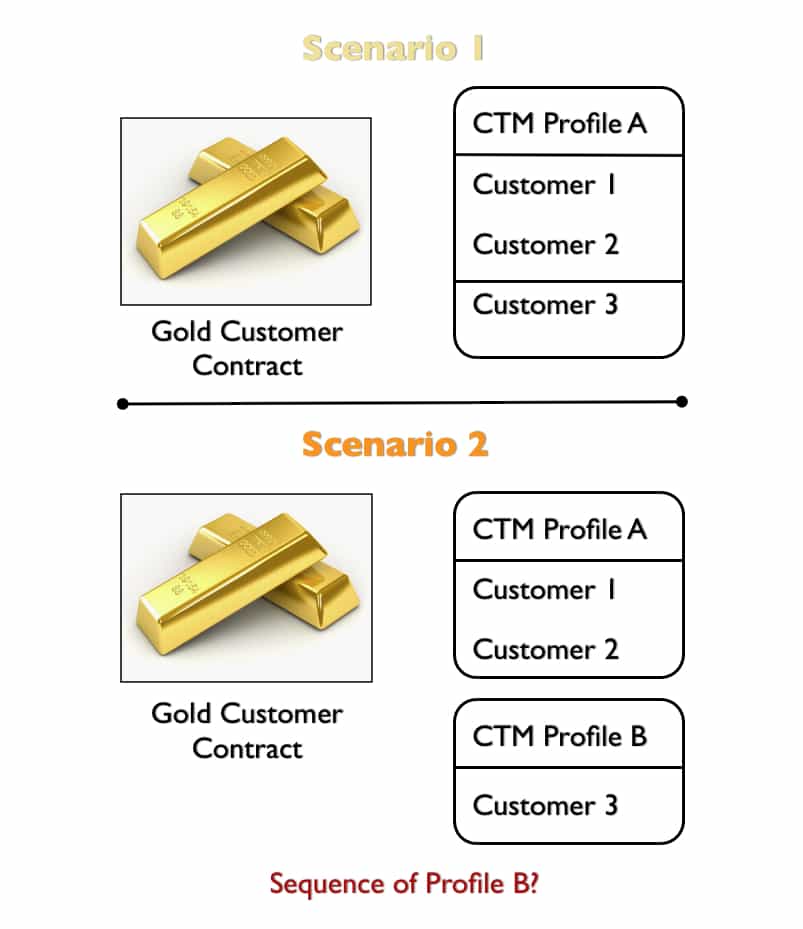 However, now the question is, should customer 3, which is now in profile B, always be run below customers 1 and 2 in the profile? They are, after all, the same priority level and paying the same premium contract rate. If they are a big customer, there will be plenty of pressure sometimes to run them first. Perhaps a compromise can be reached. In this hypothetical example, it turns out that customer 3 is only “hogging” the supply for 4 to 5 products.
However, now the question is, should customer 3, which is now in profile B, always be run below customers 1 and 2 in the profile? They are, after all, the same priority level and paying the same premium contract rate. If they are a big customer, there will be plenty of pressure sometimes to run them first. Perhaps a compromise can be reached. In this hypothetical example, it turns out that customer 3 is only “hogging” the supply for 4 to 5 products.
The agreement is made to create two CTM profiles for this customer. One for products that it does not over-consume, and one for products they consume at an acceptable rate. This third profile will be profile C.
SAP APO CTM’s Multi-Dimensional Prioritization
While CTM is often explained as a system for customer prioritization, I have used the following graphic in another article in this blog on CTM to emphasize this customer prioritization capability.
What Customer Prioritization Means in Practice
What prioritization essentially means is that higher prioritized customers can receive the allocation of inventory ahead of lower prioritized customers even if the lower prioritized customer submits their request in advance of the higher ranked customer (of course, whether this would, in fact, happen depends upon whether CTM is configured for fixed or dynamic pegging. (Pegging is described in this article.) Below is where the pegging is set in the CTM Profile.
The CTM ProfilAsAs with all the methods in SNPCTM , CTM allows you to save a profile, which is a very detailed and particular way of running CTM. By saving multiple copies of different CTM Profiles, different ways to apply CTM to the supply planning data. There are many tabs of configuration settings in CTM, as this article describes. However, in this article, I will focus on those related to priority.
A CTM Profile has a Planning Scope tab. This is where the demand selection profile and the supply selection profile are selected. (This is along with the master data selection – or what parts of the supply network CTM is to be run for, and its planning period, so for how long the horizon is for the CTM run.)

Including the order categories in the CTM Profile is the easy part. The much more complicated part is prioritizing — (CTM offers many different supply and demand categories to prioritize).
Pegging in CTM
Of course, there are also pegging controls on the Demand tab of the Product Location Master. I have not yet tested the relationship between these settings and the CTM pegging settings. That will have to wait for another article. I guess that they are unrelated to CTM and can be used to control pegging in the SNP heuristic or the SNP cost optimizer.
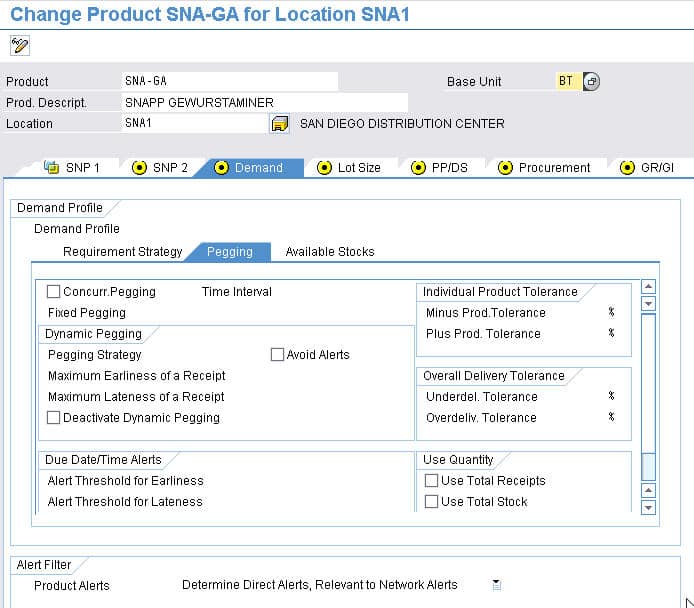
In fact, there is also a prioritization scheme which relates to order types. That is, some demand or supply elements can be either run before others or can be separated into different runs.
Therefore CTM should be seen as an application that can create a prioritization scheme in the following ways:
- For just Customers
- For just Order and Supply Categories
For both Customer and Order and Supply Categories
Conclusion
The decision by sales is to run customer three first for what is now profile C first, then run profile A with customers 1 and 2, and finally run profile B. Where there was once one profile, there are now three. Now imagine how many scenarios like this pop up during and after implementation, and it’s easy to see how the number of profiles can quickly get out of hand. Part of the problem is that there can be the assumption that CTM performs prioritization magic (it doesn’t; it simply sequentially allows some demands to come in before others).
Secondly, there can be the assumption that there is no cost to setting up finer and finer levels of prioritization. This is also not true. Every time a CTM profile is created, it has to be maintained. Every time a new policy regarding prioritization is brought, the CTM profile(s) need to be changed. It is a simple relationship, and it holds for planning in general. The more detailed the planning, the higher maintenance the solution, and relatively speaking, the less maintainable the solution will be. The right balance is never what is perfect for business requirements, nor the lowest maintenance for IT, but somewhere in between. That is a level of complexity that the company is willing to pay to maintain.